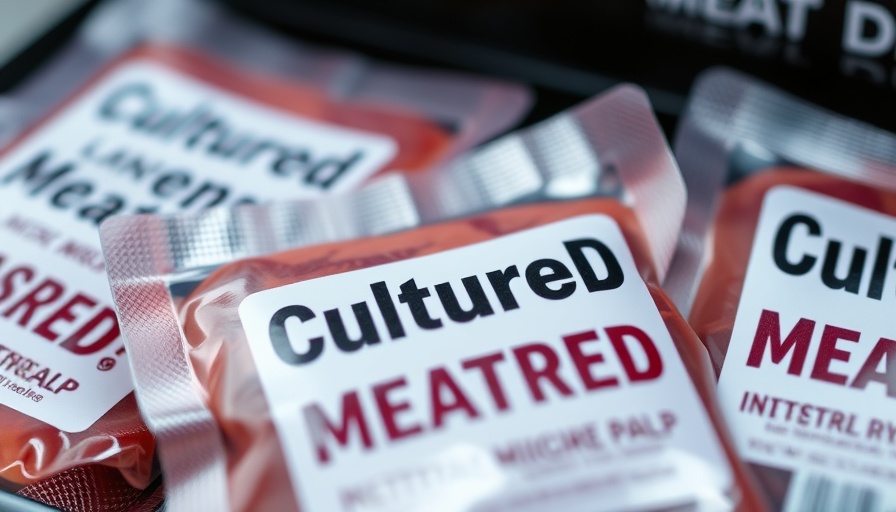
Revolutionizing Meat Production: The Rise of Clean Meat
In a world grappling with the environmental and health implications of traditional meat production, Winston Churchill's visionary words in 1932 seem more relevant than ever. The prospect of growing meat from muscle cells rather than raising entire animals is no longer just a futuristic fantasy but an emerging reality. Cultivated meat, or 'clean meat,' holds the potential to significantly reduce greenhouse gas emissions by up to 96%, alongside dramatic cuts in water and land use. As we face the threat of escalating climate change, altering our meat consumption habits is crucial if we wish to create a sustainable future.
Health Benefits: More Than Just Environmental Impact
While the environmental advantages of clean meat are compelling, the health benefits deserve equal attention. Cultivated meat not only promises a reduction in animal cruelty by potentially eliminating factory farming but it also holds significant implications for food safety—a concern that has grown alarmingly in recent years. With foodborne illness rates soaring, clear measures to safeguard consumer health are crucial. Each year, millions fall sick from pathogens in animal products, primarily due to fecal contamination that runs rampant in traditional livestock farming.
Understanding Food Safety in Cultivated Meat
Unlike conventional meat, which often harbors harmful bacteria like E. coli, Salmonella, and Campylobacter due to unsanitary processing practices, cultivated meat's clean production environment minimizes these risks. Since clean meat is produced without the need for intestines, the major vectors for disease transmission are eliminated. This transformative approach allows consumers to enjoy meat products without the fear of foodborne illness, marking a significant advancement in health and safety standards.
Counterarguments: Addressing Concerns About Clean Meat
Though many health and environmental perspectives favor the transition to cultivated meat, it comes with skepticism. Critics question the nutritional equivalence of clean meat to traditional products, specifically regarding its animal protein content and associated health risks, like arthritis and osteoporosis. Furthermore, the technology behind clean meat production remains a point of contention, as ongoing debates question the sustainability and long-term effects of lab-grown products on human health.
Practical Benefits of Embracing Clean Meat
As consumers become more health-conscious, the value of understanding and adopting clean meat can drive our eating habits in a positive direction. Beyond simply providing an alternative source of protein, cultivated meat offers consumers the chance to influence the agriculture industry by opting for healthier, safer options. By making informed choices, we not only promote individual wellness but also advocate for significant environmental reforms.
Call to Action: Exploring Clean Meat Options
As the movement for sustainable food sources grows, consumers are encouraged to explore cultivated meat products in local markets. Engaging with new food sources can foster awareness and drive demand for healthier, cleaner eating options. Together, through informed choices and advocating for clean meat products, we can contribute to a future that prioritizes health and ecological responsibility.
 Add Row
Add Row  Add
Add 




Write A Comment